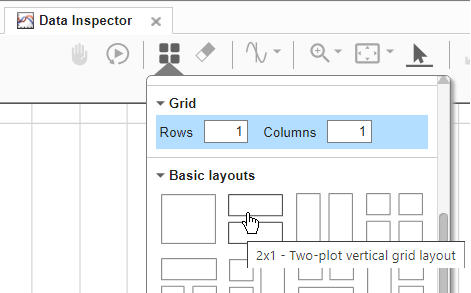Requirements-Based Testing for Model Development
This example shows how to test an autopilot subsystem against a requirement.
This example shows how to test a subsystem against a requirement by using the test manager, test harness, Test Sequence block, and Test Assessment block. The requirements document links to the test case and test harness, and verify statements assess the component under test.
As you build your model, you can add test cases to verify the model against requirements. Subsequent users can run the same test cases, then add test cases to accomplish further verification goals such as achieving 100% coverage or verifying generated code.
This example tests the Roll Reference subsystem against a requirement using three scenarios. A Test Sequence block provides inputs, and a Test Assessment block evaluates the component. The Roll Reference subsystem is one component of an autopilot control system. Roll Reference controls the reference angle of the aircraft's roll control system. The subsystem fails one assessment, prompting a design change that limits the subsystem output at high input angles.
Paths and Example Files
Enter the following to store paths and file names for the example:
topModel = 'TestAndVerificationAutopilotExample'; rollModel = 'RollAutopilotMdlRef'; testHarness = 'RollReference_Requirement1_3'; testFile = 'AutopilotTestFile.mldatx'; reqDoc = 'RollAutopilotRequirements.txt';
Open the Test File and Model
Open the RollAutopilotMdlRef model. The full control system TestAndVerificationAutopilotExample references this model.
open_system(rollModel)

Open the test file in the Test Manager.
tf = sltest.testmanager.load(testFile); sltest.testmanager.view;
Open the Requirements Editor to see the requirements associated with the Roll Reference block. In the Test Browser pane, expand AutopilotTestFile and Basic Design Test Cases in the tree, and click Requirement 1.3 test. In the Requirement 1.3 test tab, expand Requirements. Double-click on any of the requirements links to open the Requirements Editor. Highlighting a requirement displays its details in the Description section of the Properties pane.

Requirement 1.3.1 specifies that when roll hold mode becomes the active mode, the roll hold reference shall be set to the actual roll angle of the aircraft, except under the conditions described in the child requirements.
Child requirement 1.3.1.1 specifies that the roll hold reference shall be set to zero if the actual roll angle is less than 6 degrees, in either direction, at the time of roll hold engagement.
Child requirement 1.3.1.2 specifies that the roll hold reference shall be set to 30 degrees in the same direction as the actual roll angle if the actual roll angle is greater than 30 degrees at the time of roll hold engagement.
Child requirement 1.3.1.3 specifies that the roll reference shall be set to the cockpit turn knob command, up to a 30 degree limit, if the turn knob is commanding 3 degrees or more in either direction.
The test case creates a scenario for each child requirement to test the normal conditions and exceptions in the requirement.
The requirements document traces to the test harness using URLs that map to the Test Sequence block and test steps. Open the test harness and highlight the component associated with reference requirement 1.3.
sltest.harness.open([rollModel '/Roll Reference'],testHarness) rmi('highlightModel','RollReference_Requirement1_3')

The Test Sequence block, Test Assessment block, and component under test link to the requirements document. Highlight requirements links by selecting Apps > Requirements Manager and then, clicking Highlight Links in the test harness model. You can also highlight links in the Test Sequence Editor by clicking Toggle requirements links highlighting in the toolstrip. For information on creating requirements links, see View and Create Links (Requirements Toolbox).
Test Sequence
Open the Test Sequence block.
open_system('RollReference_Requirement1_3/Test Sequence')

The Test Sequence block creates test inputs for three scenarios:
In each test, the test sequence sets a signal level, then engages the autopilot. The test sequence checks that PhiRef is stable for a minimum time DurationLimit before it transitions to the next signal level. For the first two scenarios, the test sequence sets the EndTest local variable to 1, triggering the transition to the next scenario.
These scenarios check basic component function, but do not necessarily achieve objectives such as 100% coverage.
Test Assessments
Open the Test Assessment block.
open_system('RollReference_Requirement1_3/Test Assessment')

The Test Assessment block evaluates Roll Reference. The assessment block is a library linked subsystem, which facilitates test assessment reuse between multiple test harnesses. The block contains verify statements covering:
The requirement that
PhiRef=PhiwhenPhioperates inside the low and high limits.The requirement that
PhiRef = 0whenPhi < 6degrees.The requirement that
PhiRef = 30whenPhi > 30degrees.The requirement that when
TurnKnobis engaged,PhiRef = TurnKnobifTurnKnob >= 3degrees.
Verify the Subsystem
To run the test, in the Test Manager, right-click Requirement 1.3 Test in the Test Browser pane, and click Run.
The simulation returns verify statement results and simulation output in the Test Manager. The verify_high_pos statement fails.
In the Results and Artifacts pane in the Test Manager, expand the Results.
Select Verify Statements.
In the Inspect pane of the Data Inspector tab, select Simulink: verify_high_pos. The plot shows when the statement fails.

In the "Data Inspector* tab, click Visualizations and layouts and under Basic layouts select 2x1 - Two-plot vertical grid layout.

Click the lower plot, expand the Sim Output signals in the Inspect pane, and select
PhiRefandPhi. The output traces align with theverifyresults in the upper plot. Observe thatPhiRefexceeds 30 degrees whenPhiexceeds 30 degrees.

Update RollReference to limit the PhiRef signal.
Close the test harness.
In the main model, double-click the Roll Reference block and add a Saturation block to the model as shown.
Set the upper limit to
30and the lower limit to-30.Link the block to its requirement. Click the Saturation block to select it. In the Requirements editor, right-click requirement 1.1.2 and click Link from Saturation.
Run the test again. The verify statement passes, and the output in the test manager shows that PhiRef does not exceed 30 degrees.

See Also
Requirements Manager (Requirements Toolbox)